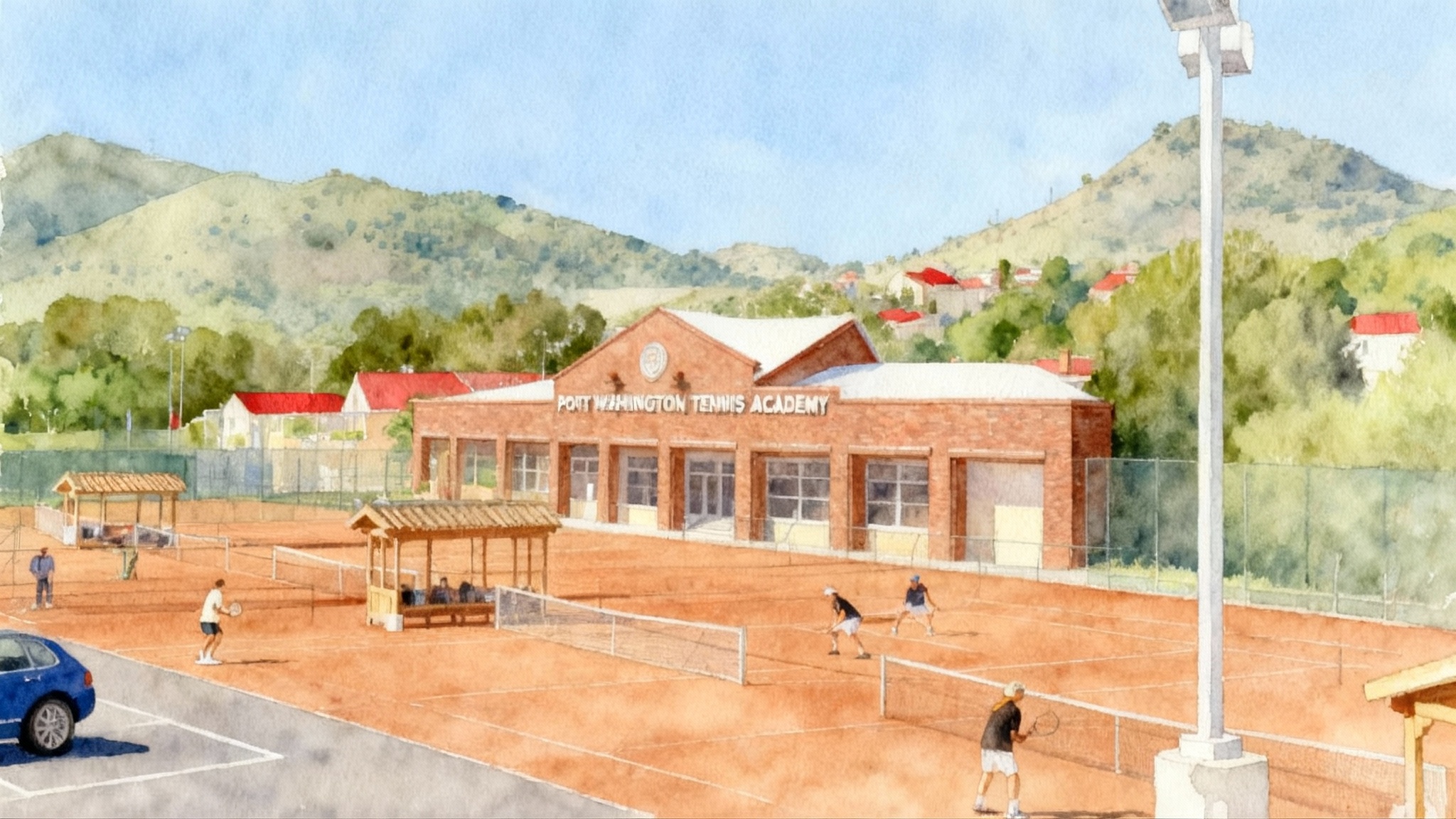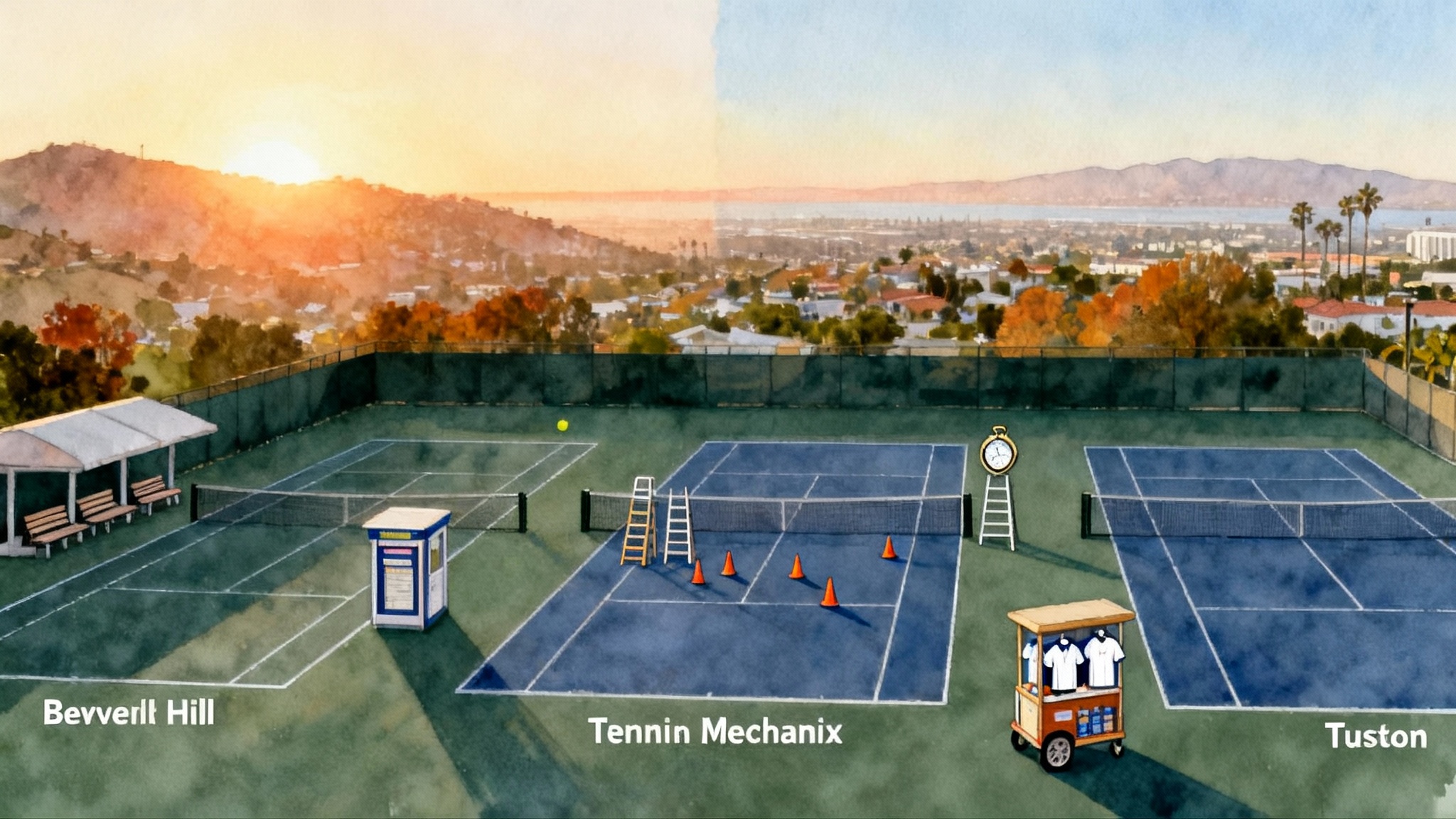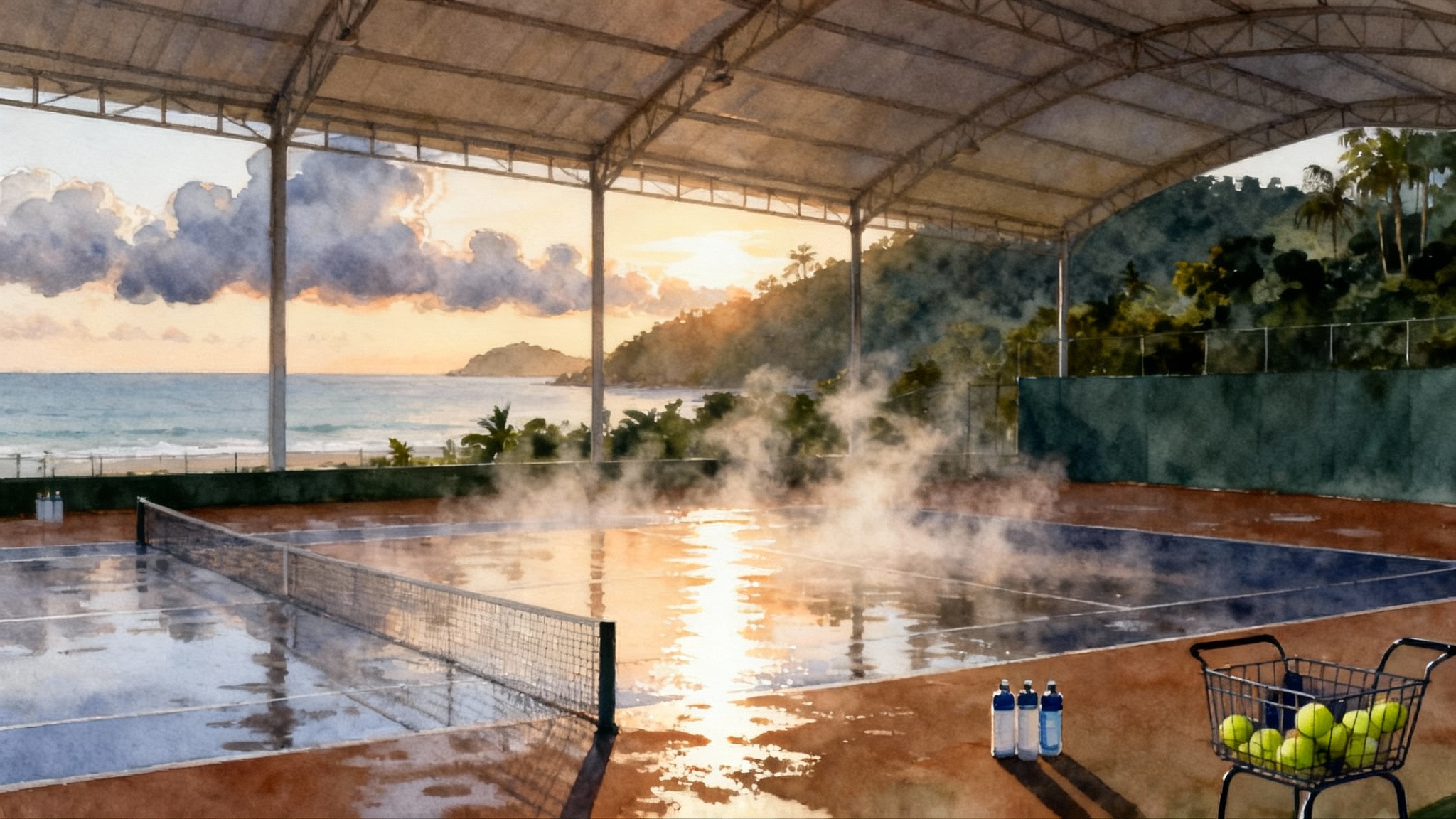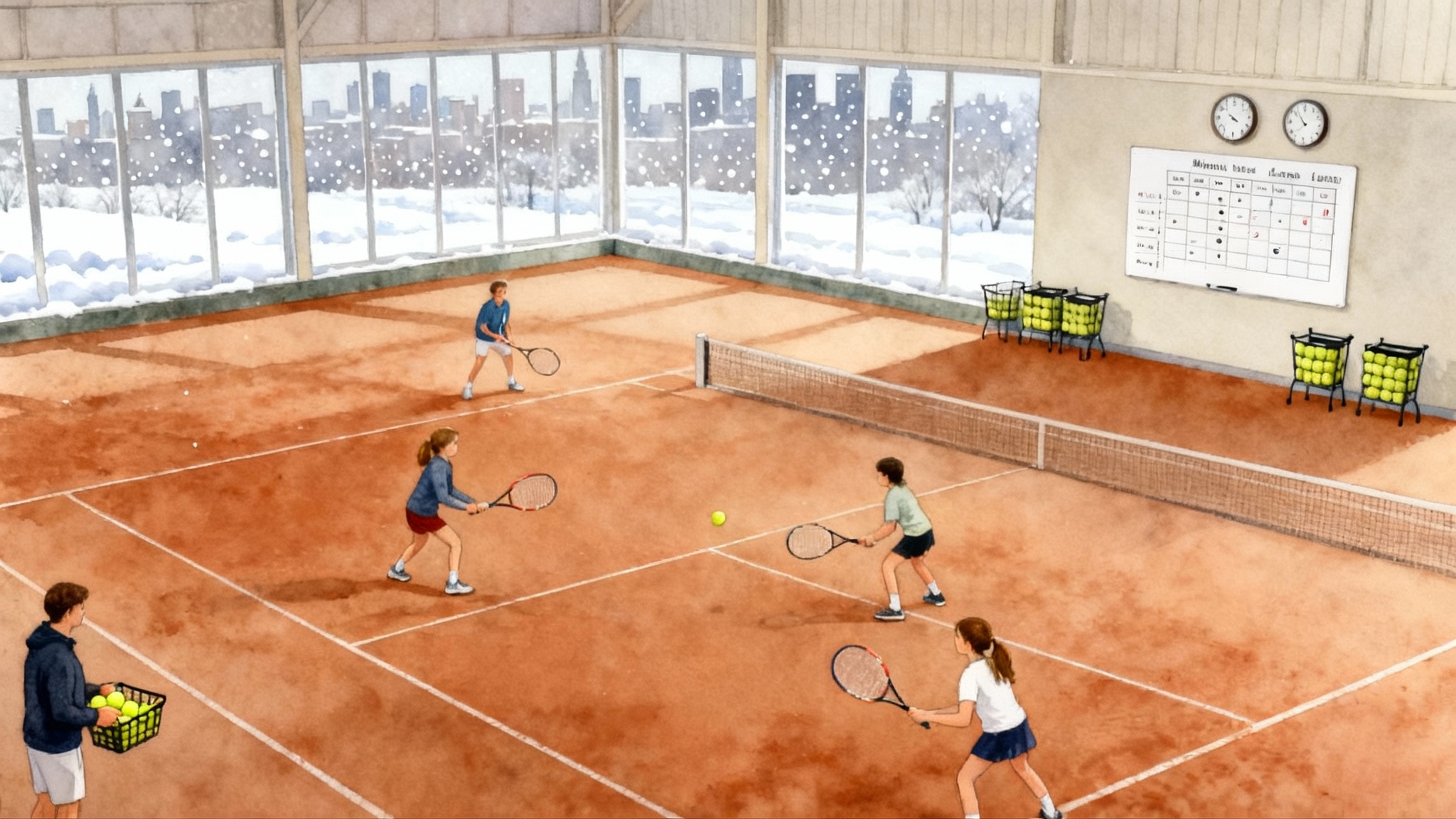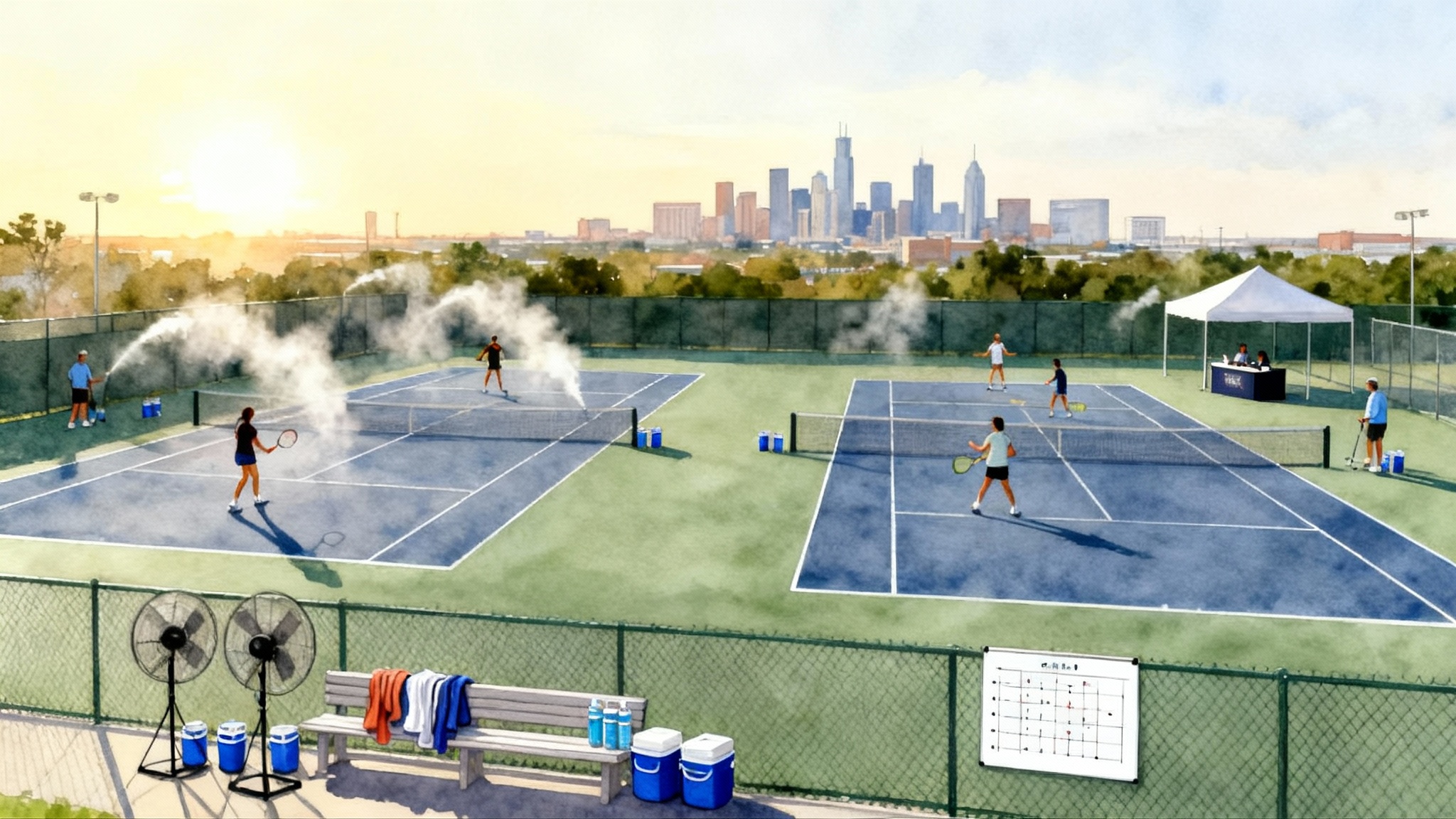Best NY and NJ Tennis Academies 2025–2026: Parent Guide
A practical, data-led comparison of leading New York and New Jersey tennis academies. Learn how to benchmark UTR and WTN gains, gauge winter indoor capacity, map school pathways, budget costs, plan tournaments, and navigate Oct–Dec 2025 tryouts.
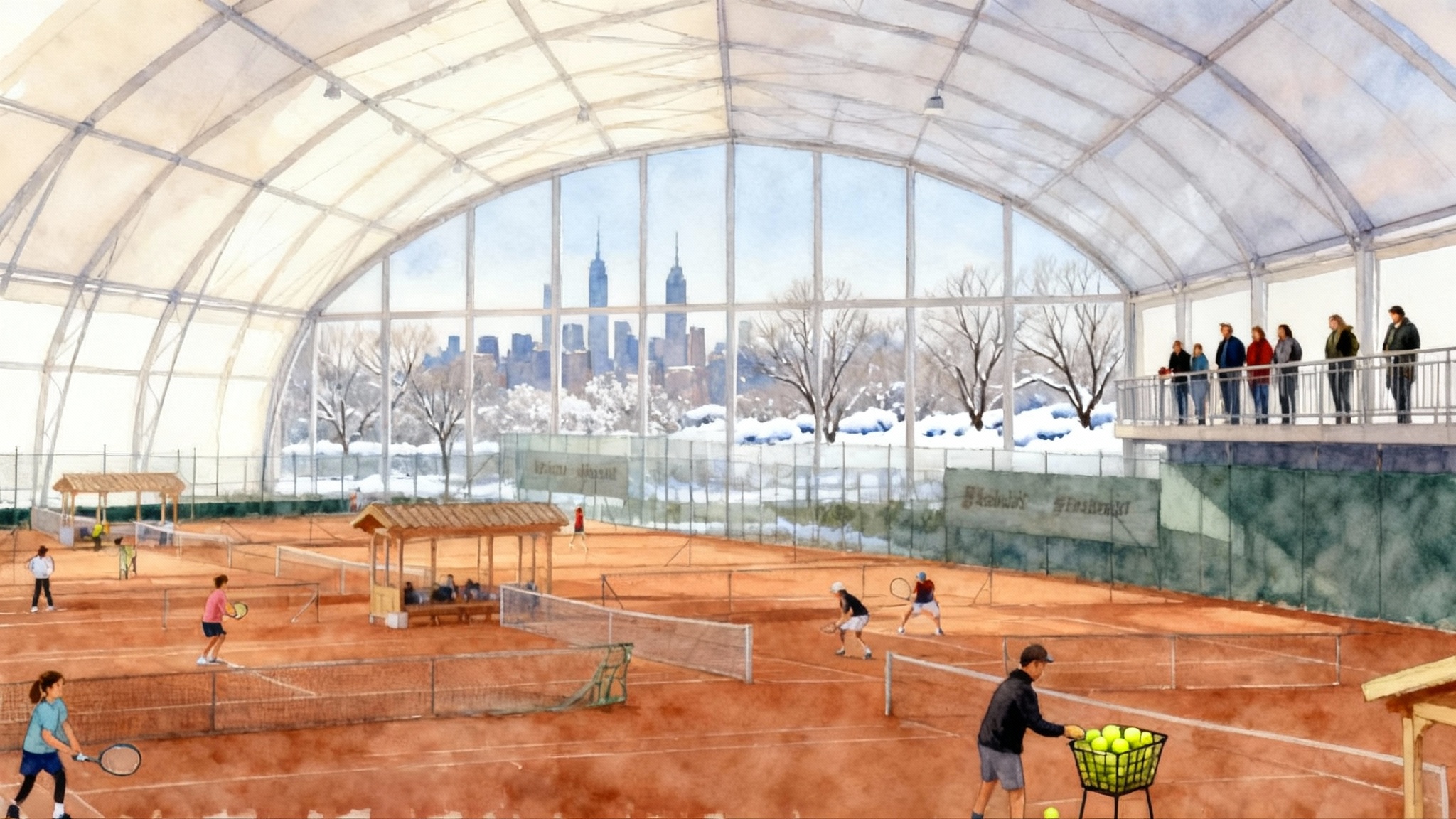
How to use this guide
If you live in New York or New Jersey, you have more tennis academy choice than almost anywhere in the country. That can be a feature and a bug. This guide helps you compare the major programs parents ask about most often in the tri-state area: JMTA, CourtSense, Centercourt, Tennis Innovators Academy, Westchester, and Robbie Wagner. We focus on what moves the needle for 10U through 18U players: measurable rating gains, reliable indoor court time in winter, school and boarding pathways, real costs, and tournament logistics. You will also find an October to December 2025 tryout timeline, sample weekly training schedules, and checklists to match your player to the right pathway.
This is a practical playbook. Use it to frame questions, capture data, and make a confident choice. If you want to compare other regions, see our Best Florida Tennis Academies 2025–2026 and the Best Bay Area academies guide.
UTR and WTN in plain English
Two rating systems dominate American junior tennis conversations. Universal Tennis Rating compresses performance into a single number with two decimal places that updates as a player competes against rated opponents. If you are new to it, scan the official overview of the UTR rating basics to understand inputs and update cadence.
The International Tennis Federation publishes World Tennis Number, a scale from 40 to 1 where lower is stronger. The system includes confidence intervals, which matter when you evaluate short term progress. For context, read the World Tennis Number overview and note how reliability bands work.
Why both matter: UTR is widely used by college coaches and U.S. tournament organizers for seeding and selection. WTN is the global standard that connects to international play. In New York and New Jersey you will encounter both in academy placement and tournament entry filters.
The big five in the tri-state, at a glance
The point is not to crown a winner. It is to understand structure and fit so that your player spends less time commuting and more time developing.
-
JMTA (John McEnroe Tennis Academy). Multi-site model with a large year-round footprint that covers New York City, Long Island, and Westchester. Expect layered groups by level, a deep private lesson bench, and frequent UTR match play blocks. Strengths include scale, variety of hitting partners, and event cadence that supports rating activity.
-
CourtSense. Concentrated New Jersey footprint with a high touch coaching culture, detailed video and patterns work, and tightly managed player to court ratios. Strengths include individualized progress tracking and a consistent indoor routine during the winter months.
-
Centercourt. Multi-campus New Jersey presence with high performance blocks, performance training, and tournament travel support. Families who want an integrated athletic and academic week often look here because of scheduling flexibility and a clear college track pathway.
-
Tennis Innovators Academy, Westchester. A Westchester based operation with an emphasis on technical fundamentals, live ball patterns, and a strong pipeline for green and yellow ball progression. Appeals to families seeking a tight commute from central and northern Westchester and steady UTR match opportunities.
-
Robbie Wagner. A Long Island based program with a training culture that values live points, serve and return, and tournament readiness. Appeals to players who want a smaller community feel and frequent local event touchpoints.
Each program varies by campus, coach group, and season. Visit, watch two complete sessions, and ask the same questions everywhere. Your data will tell you more than any brochure.
A data-led way to compare programs
Think like a product manager. You need the same core metrics from each academy, gathered the same way, so the comparison is fair.
Capture these ten data points in a single spreadsheet for each academy you are considering:
-
Player to court ratio. Record the real number you saw for your child’s level. A ratio of 4 to 1 feels different from 6 to 1 during live points.
-
Weekly on court hours. Separate group training, supervised match play, and private lessons.
-
Weekly off court hours. Include strength, movement, mobility, and classroom sessions.
-
Coach continuity. How many days per week will the same lead coach see your player?
-
UTR exposure. Count the number of UTR events hosted onsite per month during winter. More touchpoints can shorten the feedback loop.
-
Tournament concierge. What help exists with entries, doubles partner matching, and warm ups on site?
-
Indoor reliability. How many indoor courts are available to the high performance block during peak winter hours, and what is the cancellation policy in snow events?
-
Academic flexibility. For middle school and high school, what arrival windows and daytime slots exist to reduce late nights?
-
Annual cost envelope. Tuition, privates, travel, stringing, match fees, and shoes. See the budget template below.
-
Progress tracking. How does the academy document goals, serve speed, hitting depth, and pressure tolerance, not just ratings?
Once you have this data, compute two helpful diagnostics:
-
UTR gain per 100 on court hours. Over a three to six month window, divide net UTR change by total on court hours. This normalizes for players who train more.
-
WTN delta per month. Track WTN change alongside confidence interval shrinkage. A stable WTN with a tighter band often signals real consolidation of skills.
These are not perfect, but they let you compare like with like across different academy structures.
Benchmark ranges that help set expectations
Every player moves at a different pace, especially through growth spurts. Still, ranges help parents calibrate.
-
10U green ball. Typical UTR progression is lumpy. Expect flat stretches punctuated by jumps after serve coordination clicks. A healthy outcome is one clear level shift in three to six months, paired with better rally tolerance. WTN confidence should tighten faster than the headline number changes.
-
12U to 14U yellow ball. Expect clearer monthly momentum if your player competes weekly. UTR tends to move in tenths and WTN bands shrink as match volume rises. Focus on serve plus one, return plus one, and live point commitment, not just stroke aesthetics.
-
15U to 18U college track. Ratings become path dependent. The right doubles partner, a good winter match block, and two solid out of section results can move a rating more than ten extra private lessons. Look for an academy that schedules match play that fits your player’s rating band and travel radius.
Use these ranges to shape questions rather than to set quotas. Ratings are outcomes, not drills.
Winter indoor capacity and why it matters
You are buying indoor reliability. Ask about court allocation by block, not just total courts.
-
Large network model. Many sites and dozens of indoor courts across a metro area. Benefits include more partners and event hosting. Risks include travel time between sites and potentially variable coaching continuity if you move between locations.
-
Mid sized multi campus model. Several sites with strong local control and clear block ownership. Benefits include consistent indoor access and a cohesive coaching voice. Risks include waitlists during popular hours.
-
Boutique single or dual site model. Tighter community with visible coach to player ownership. Benefits include close observation and quick adjustments. Risks include fewer indoor courts during peak snow weeks and a need to plan tournament weekends earlier.
Whichever you choose, ask for a written winter plan that shows days, times, and how many courts your child’s block controls from October through March.
School and boarding pathways
Families ask about school alignment as much as forehands. Here is how to frame it.
-
Day students with late afternoon training. Standard path for most 10U and 12U players and many 14U players. Look for homework time built into travel routines.
-
Day students with mid day training. High schoolers who finish academics early can train when courts are less crowded. Ask about quiet study space between blocks.
-
Boarding or hybrid models. Some programs offer or coordinate with residential options, or allow out of area families to stack multiple weeks with homestay or short term housing. Clarify dorm supervision, study hall, and transportation to tournaments before you commit.
The right path is the one that preserves sleep, school quality, and match consistency. Tennis accelerates when life is simple and repeatable.
What a full year really costs
Prices vary by campus and coach, but you can build a realistic envelope.
-
Group training. Expect a monthly tuition for two to four days per week. Ask how the price scales with more days and how makeup policies work.
-
Private lessons. Hourly rates track coach seniority. Ask for a blended plan that mixes technical and live point sessions and includes video.
-
S and C. Strength and conditioning can be included or billed separately. Ask whether it is age appropriate and coach supervised.
-
Match play and UTR events. Entry fees add up quickly. Budget for two to four events per month in winter, plus one or two USTA weekends.
-
Tournament travel. Gas, tolls, hotel, and meals. Create a per weekend estimate and multiply by your planned calendar.
-
Stringing and gear. Strings break faster in cold indoor months. Track stringing frequency and bulk order to control costs.
Ask each academy to give you a written seasonal quote for October through March that includes tuition, privates, S and C, and match play. Then add your travel and stringing estimates to get your true cost.
Tournament logistics in New York and New Jersey
Indoor winter success is part planning and part patience.
-
Calendar. Build a four week rolling schedule. Mix local UTR events with USTA Eastern weekends. Leave one weekend open per month for recovery.
-
Selection. Use your player’s current rating and band to pick events where they will see 50 to 70 percent competitive matches. Too many easy or hard wins slows learning.
-
Driving radius. In winter, a 60 to 90 minute radius captures a surprising number of quality draws in the tri-state area. Longer trips should be purposeful.
-
Doubles. Doubles weekends are a fast way to accelerate return and transition skills. Ask your academy to help with partner matches two weeks before the event.
-
Warm up. Arrive one hour early. Ten minutes of movement, ten minutes shadow swings, twenty minutes of dynamic hand feeds, and ten minutes of serve and return.
The best programs make tournaments feel routine. That is how ratings and confidence move together.
Oct to Dec 2025 tryout and evaluation timeline
Use this timeline as a planning checklist for the tri-state academies listed above. Exact sign up windows can shift by campus. Slots fill quickly once winter blocks finalize.
-
Week of October 13 to 19, 2025. Submit inquiry forms and request evaluation slots at two to three target academies. Ask for a full session observation plus a 30 minute coach debrief.
-
Week of October 20 to 26, 2025. Attend the first evaluation. Capture player to court ratio, time on ball, and coach feedback about next steps. If you like the fit, ask for a tentative winter hold.
-
October 27 to November 2, 2025. Do a second evaluation at your backup academy. Compare notes using the ten point checklist above. Clarify whether there is a waitlist for prime hours.
-
November 3 to November 16, 2025. Lock in your winter days and times. Request a three month development plan in writing that lists technical priorities, match play cadence, and target events.
-
November 17 to November 30, 2025. Schedule two privates to front load technical work before tournament density rises in December and January. Confirm S and C times that do not push bedtime too late.
-
December 1 to December 15, 2025. Run your first mini cycle. Two weekends of matches, one lighter weekend, then a review. Ask for video clips that illustrate one clear technical change and one tactical habit.
-
December 16 to December 31, 2025. Many academies reduce hours around the holidays. Use this to travel smart or to bank rest and schoolwork. Plan a January to March event block before New Year’s Eve to avoid waitlists.
Treat these dates as action prompts. The earlier you secure winter hours, the smoother your season runs when snow hits.
Sample weekly training schedules
These examples show how a balanced week can look. Adjust commute, school, and recovery to fit your family.
-
10U green ball pathway
- Monday. Group technical session 90 minutes with emphasis on serve rhythm and contact height.
- Wednesday. Games based group 90 minutes with transition and first volley.
- Friday. Supervised match play 60 minutes plus ten minutes serve targets.
- Weekend. One UTR session every other week, alternate with family practice and free play.
- Recovery. Two short movement sessions and one fun cross sport day.
-
12U to 14U yellow ball development
- Monday. Group 2 hours with live points and patterns. Track first serve percentage and depth targets.
- Tuesday. Strength and movement 45 minutes plus mobility.
- Thursday. Private 60 minutes focused on serve and return, followed by 30 minutes of serve games.
- Friday. UTR match play 2 hours.
- Weekend. One tournament weekend per month, two local events or practice sets on other weekends.
-
15U to 18U college track
- Monday. Group 2 hours intensity block with measured ball speed and direction control.
- Tuesday. S and C 60 minutes. Mobility focus after.
- Wednesday. Private 60 minutes plus 30 minutes return games.
- Thursday. Group 2 hours pressure sets and tiebreakers.
- Friday. Supervised match play 2 hours.
- Weekend. Tournament or two days of four set practice matches, alternating surfaces where possible.
The matching checklist for 10U to 18U
Run this checklist for each academy you visit. It will keep you honest and help your player feel heard.
- Commute fit. Under 45 minutes door to door on school days.
- Court access. Written confirmation of indoor courts and block hours for winter.
- Coach continuity. Same lead coach three days per week or better.
- Feedback loop. Monthly written summary and one video clip that shows progress.
- Rating plan. UTR and WTN cadence that matches school and family calendar.
- Partner pool. At least three practice partners within half a UTR point or five WTN points.
- Tournament support. Clear help with entries, warm ups, and doubles partners.
- Budget clarity. Full seasonal quote that includes every recurring fee.
- Culture fit. Your player leaves evaluation day smiling and tired.
Score each item from one to five and total the score. A program that matches your life will beat a fancy name that does not fit your week.
Putting it all together
You do not need perfect information to make a great decision. You need enough of the right information, gathered the same way at each academy, and a plan that aligns training, school, and family logistics. Start with a narrow list. Visit with a camera and a notebook. Track UTR and WTN change by training hour. Lock in winter court time early. Budget for rest as carefully as you budget for tournaments. When a program gives you reliability, honest feedback, and practice partners your child enjoys, progress follows. That is the win that matters.
